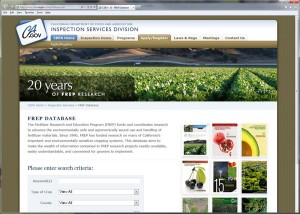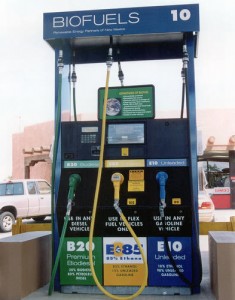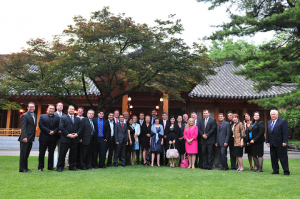http://www.theatlantic.com/magazine/archive/2012/07/the-triumph-of-the-family-farm/8998/
We buried my grandfather last spring. He had died in his sleep in his own bed at 95, so, as funerals go, it wasn’t a grim occasion. But it was a historic one for our small rural community. My great-grandparents were early settlers, arriving in 1913 and farming the land throughout their lives. My grandfather continued that tradition, and now rests next to them on a hillside overlooking the family homestead.
If you’re a part of the roughly 99 percent of the North American population that doesn’t work on a farm, you might guess at what comes next—many a lament has been written about the passing of the good old days in rural areas, the family farm’s decline, and the inevitable loss of the homestead. But in many respects, that narrative itself is obsolete. That’s certainly true in my family’s case: The Freeland farm is still being cultivated by my father. And it is bigger and more prosperous than ever.
My dad farms 3,200 acres of his own, and rents another 2,400—all told, a territory seven times the size of Central Park. Last year, he produced 3,900 tonnes (or metric tons) of wheat, 2,500 tonnes of canola, and 1,400 tonnes of barley. (That’s enough to produce 13 million loaves of bread, 1.2 million liters of vegetable oil, and 40,000 barrels of beer.) His revenue last year was more than $2 million, and he admits to having made “a good profit,” but won’t reveal more than that. The farm has just three workers, my dad and his two hired men, who farm with him nine months of the year. For the two or three weeks of seeding and harvest, my dad usually hires a few friends to help out, too.
My father farms in northern Alberta, but his story is typical of large-scale family farmers across North America. Urbanites may picture farmers as hip heritage-pig breeders returning to the land, or a struggling rural underclass waging a doomed battle to hang on to their patrimony as agribusiness moves in. But these stereotypes are misleading. In 2010, of all the farms in the United States with at least $1 million in revenues, 88 percent were family farms, and they accounted for 79 percent of production. Large-scale farmers today are sophisticated businesspeople who use GPS equipment to guide their combines, biotechnology to boost their yields, and futures contracts to hedge their risk. They are also pretty rich.
“It definitely is not just your father,” Jason Henderson, the vice president and branch executive of the Omaha branch of the Federal Reserve Bank of Kansas City, told me. Henderson is essentially the Fed’s top analyst of the agricultural economy. “In the U.S. and Canada in 2010 and 2011,” he said, “farm incomes have been booming. U.S. net farming incomes rose more than 20 percent in each of those years. Farmers are flush with cash.”
Evidence of the boom is visible throughout the Farm Belt. “Tractor and combine sales have doubled, compared with 2003,” Henderson told me. “Pivot-irrigation-system sales are up. I’ve been driving across Nebraska, Wisconsin, and Iowa, and I have not seen so many shiny new grain bins, ever.”
Troy Houlder, my father’s local farm-machinery dealer, told me that in the 22 years he’s been in the business, “supply has never been this tight.” The vehicles in highest demand, he said, are midrange-horsepower tractors, which run from $70,000 to $110,000. If a farmer walked into his store in early May wanting to buy that kind of tractor, “he’s not getting one until probably November or December, even if he had a fistful of hundreds.”
Big Money has noticed these trends, and is beginning to pile in. “We are seeing a tremendous uptick in allocations and interest in farmland,” says Chris Erickson of HighQuest Partners, an agricultural consultancy and investor. Erickson told me that big institutional investors—pension funds, insurance companies—have recently been making investments in farmland ranging from “the several hundred millions to the billions.” Erickson said this broad interest is new, and is driven by the fact that “the fundamentals are changing dramatically.”
Jim Rogers, who co-founded the legendary hedge fund Quantum with George Soros, told me he believes farming is “one of the most exciting professions” in the world—and that the recent boom is likely to continue for a long time. “Throughout history, we’ve had long periods when the financial sectors were in charge,” he said, “but we’ve also had long periods when the people who have produced real goods were in charge—the farmers, the miners … All of you people who got M.B.A.s made mistakes, because the City of London and Wall Street are not going to be great places to be in the next two or three decades. It’s going to be the people who produce real goods.”
The rural renaissance isn’t just a curiosity: it’s an important new chapter in the story of America’s ability to thrive in the global economy, and in eras of disruptive technological change. As America struggles to adapt to a new wave of creative destruction that is shaking up the manufacturing and service sectors as profoundly as industrialization transformed the agrarian age, the resurgence of the family farm offers some lessons on how we might survive this wave of change, too.
At the heart of the farm boom are the very same forces that are remaking the rest of the American economy—technological revolution and global integration. When you think of technological revolution, you probably think of geeks in cool coastal spaces like the Google campus, or perhaps of math wizards on Wall Street. But one source of rural prosperity is the adoption of radical new technologies—and a consequent surge in productivity.
Henderson situates the change over the long sweep of history: “Prior to World War II, it took 100 hours of labor to produce 100 bushels of corn. Today, it takes less than two hours.” According to Erik O’Donoghue and Robert Hoppe, two economists at the Department of Agriculture, in 2009 U.S. farm output was 170 percent above its level in 1948, having grown at a rate of 1.63 percent a year. Those figures understate the productivity revolution, because these increasing harvests have been delivered with fewer inputs, particularly less labor and less land.
Tom Vilsack, the agriculture secretary, told me that since 1980, agriculture has been “the second-most-productive aspect of our economy … I’m 61 years old, and in my lifetime, corn production has increased 400 percent, soybeans 1,000 percent, and wheat 100 percent.”
Continuous technological improvements have resulted in a system of crop farming that someone who left the countryside 20 years ago would be hard-pressed to recognize, and certainly couldn’t operate (I stopped helping my dad in the early 1990s, when I became a foreign correspondent, and I am no longer allowed to drive any of his three combines). The computer systems powering a “precision farmer’s” seed drill and combine have been programmed with the exact parameters of all his fields and are synced up with one another. That means the seed drill knows what last year’s harvest was from each inch of land, thanks to data recorded by the combine, and can seed and apply fertilizer accordingly.
The cabs of today’s combines, the most sophisticated of farm machines, look like airplane cockpits, or the control rooms on factory floors. Monitors tell the farmer how many bushels to the acre his land is yielding even as he harvests his crop, give him a read on the moisture level, and tell him how much he is leaving behind on the field. Troy Houlder’s flagship New Holland combine, the CR9090, which sells for $520,000, has a new feature called IntelliCruise, which automatically speeds up or slows down the machine depending on how heavy the crop is. (The CR9090 also features a so-called buddy seat, often occupied by a grandchild, and a small refrigerator, so its owner-operator’s lunch stays cold.)
Fancy GPS systems and space-age tractors are what most excite the farmers I know and astound their city friends. But the most profound change is something an urban civilian driving through the Farm Belt wouldn’t even notice. Ever since people first domesticated cereal crops in the Fertile Crescent 11,000 years ago, farming has followed a seemingly immutable pattern—plow your field, seed your field, harvest your field, repeat. But today, farmers can skip the plowing step.
This historic shift is known as the no-till revolution. No-till was a quirky, fringe idea in the 1970s. Today, it is practiced on one-third of U.S. cropland. It has been made more effective by the genetic engineering of seeds and the adoption of crop varieties with herbicide tolerance or a resistance to pests.
Farmers are rightly proud of their swift embrace of innovation. But the biggest reason rural bank accounts are swelling today isn’t technology (nor is it government subsidies, though those have helped, and may no longer be justified). It is, rather, the growing global middle class. “The single most important factor in all of this is the changing diet in the emerging markets,” Erickson told me. “If people there go from earning $2 a day to $3 a day, they aren’t going to buy a Mercedes, but they are going to buy a piece of chicken or a piece of pork.” That translates into surging prices for feed grains like corn, soybeans, wheat, and canola, and surging farm incomes around the world. In the early 1990s, China, for instance, was self-sufficient in soybean production; in 2010, it was the top importer of U.S. agricultural products.
This shift has made for unusual bedfellows. At a time when the mainstream U.S. political discourse has identified China as a relentless and predatory exporter—and a destroyer of American jobs—farmers are outliers. Farmers “want China to expand,” Henderson told me, “because that means a bigger or broader market” for their crops. Some of America’s biggest supporters of open borders are down home on the farm.
Agriculture, which once employed most of the population and now employs almost no one, is often held up as a grim harbinger of what awaits U.S. manufacturing (and beyond that, white-collar professions that can be partially outsourced or performed by computers). The United States today has more bus drivers than it has farmers. Technological advances have drastically shrunk the number of people required to no-till the land.
Yet today’s agricultural renaissance also shows that there is some light at the end of the tunnel—or, if you will, a good harvest at the end of the furrow. Most encouragingly, the agricultural boom shows that globalization really is a two-way street, and not just for the geniuses at Apple and Goldman Sachs. The rising global middle class wants hamburgers—which is where farmers come in—but it also wants hundreds of other middle-class comforts, and as it grows richer, it will be able to afford more of them. Helping to fill these wants is where many of the rest of us should look for opportunity. And you don’t have to work for a corporate behemoth or have a venture capitalist on your speed dial to take advantage of the changing world economy. One of the most surprising aspects of the farm story is that its heroes are self-employed entrepreneurs, albeit ones who own a lot of land.
Of course, that still leaves open the question of what to do about all those jobs being lost. One of the great, and largely forgotten, triumphs of American society and government has been how smoothly U.S. farmers and their communities negotiated the creative destruction of the early 20th century and emerged triumphant when it was over. Lawrence Katz, a Harvard professor who is probably America’s most esteemed labor economist, has, together with his partner and fellow Harvard professor, Claudia Goldin, studied how they did it. The answer, Katz told me, was heavy investment in education: “Iowa, Nebraska, the Dakotas, California—these were the leaders in the high-school movement.”
Katz said this big investment in education was a deliberate response to the rapid technological advances and productivity gains in both agriculture and manufacturing. Farmers could see that machines meant fewer hands would be needed on the land, while new jobs were being created in the cities. So they built schools to educate their children for those new roles. The strategy worked: high school made the children who stayed home better farmers and gave the rest the tools to leave. In fact, the Farm Belt’s high-school movement was so successful that farm children who moved to the big cities soon became the bosses of the native-born urbanites. “They tended to be more educated than the city slickers and move to better jobs in the city than the locals,” Katz said.
The challenge those Midwestern farm communities faced same 100 years ago was remarkably similar to the challenge much of America faces today—an economic transformation that is making the country richer and more productive, but that also means most of our children won’t be able to do the same jobs we do. A high-school education was enough for the children of farmers in the early 20th century. Children today will need college, with an emphasis on quantitative and analytical skills, if they are to thrive.
But while today’s problem would seem familiar to those early-20th-century farmers, today’s response would not. “We did a better job in that period of preparing the next generation for their new context than we are doing today,” Katz said. “These areas made the right level of investment in education. We have not even approached the equivalent today.”
The farming towns of the past saw themselves as true communities, with a collective responsibility to ready their children for the future. That sensibility has broken down. “Areas that had a larger share of older citizens actually were more supportive of education, which is the opposite of today,” Katz told me.
Today’s wealthy farmers, and their prosperous city cousins, are the beneficiaries of a long-ago communal decision to invest in the future. We could learn from their great-grandparents.










